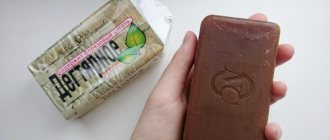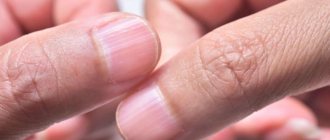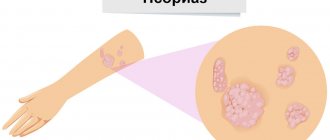A Guide to Home Phototherapy for Psoriasis
Phototherapy or light therapy may help reduce the symptoms of psoriasis.
Home phototherapy can be safe and effective for people with psoriasis if they follow their doctor's instructions for its use. Psoriasis is an autoimmune disease in which the immune system becomes oversensitive and attacks healthy skin cells. The attacking cells multiply faster than normal and form a rash of thick, inflamed plaques on the skin. These plaques usually have a flaky crust on top.
Phototherapy can be done on an outpatient basis in a clinic, or your doctor may prescribe a phototherapy unit for you to use at home. Research shows that home phototherapy can provide the same results as hospital treatment.
This article explains how phototherapy works, the different types of home phototherapy, and possible side effects.
Triggers and problems associated with the disease
Since psoriasis is characterized by clear genetic determination, epidermal cells are subject to hyperproliferation during its development. As a result of complex processes within the body, among which autoimmune factors probably play a major role, an inflammatory process occurs inside the skin.
Frequent triggers of the disease are definitely stress and mental stress. Various infections (frontal sinuses, sinusitis, diseases of the genitourinary system, etc.) can also be provoking factors. Psoriatic plaques are often localized in places where there is mechanical damage to the skin (scratches, injections, cuts). They also occur after taking certain medications: for example, beta-blockers or NSAIDs. Severe climatic conditions also play an important role in the clinical picture of the disease.
Got some free time?
Then use it! Get additional education!
There is a major problem that many patients face regularly. Despite the variety of therapeutic methods, not every form of psoriasis responds to them, so the search for new treatment methods continues to this day. All patients, without exception, talk about the positive effect of heat and sun on the course of psoriasis. That is why ultraviolet spectrum A and B began to be actively used for anti-psoriatic therapy.
What is phototherapy?
Phototherapy uses ultraviolet light to reduce swelling and slow the overproduction of skin cells caused by psoriasis. Ultraviolet light is invisible to the naked eye and penetrates the skin.
There are two types of UV radiation:
UV-A
This type of light can penetrate deeper into the skin than UVB. A person receiving UVA light treatment must sensitize their skin with a plant-based chemical called psoralen in order for the treatment to be effective.
UV-B
UVB light penetrates the outer layers of the skin and can cause sunburn. Phototherapy using UV-B light is effective on its own, without any chemicals.
Operating principle of UV 311 nm
Research scientists on psoriasis and other skin diseases T. Fisher and J. Parrish have proven through research that the healing spectrum of ultraviolet radiation is in the zone of 296-313 nm. Their followers concluded that the wavelength of 311 nm shows the best result. Practical use and research of the 311 nm method show that it is effective for the treatment of psoriasis. The principle of operation has not been fully elucidated by scientists, but much is already known to science.
Side effects
Phototherapy for psoriasis often causes sunburn reactions. In rare cases, this can also lead to blistering.
One 2022 study found that people who used home phototherapy experienced severe erythema, a skin reaction that causes a rash, more often than people treated in a hospital. However, blisters were more common among those treated in hospital.
Exposure to ultraviolet radiation can also increase the risk of skin cancer, so when using phototherapy it is important to follow your doctor's instructions and have your skin examined regularly.
Indications
PUVA therapy is used for different forms of psoriasis:
- simple or plaque-like;
- drop-shaped;
- spotted
- pustular or exudative;
- follicular;
- seborrheic;
- erythrodermic;
- arthropathic;
- palmoplantar;
- nail;
- scalp.
The technique is also used in cases of low effectiveness of other methods, for example, after ineffective use of corticosteroid drugs. Acceptable at any stage of psoriasis, including progressive.
Does phototherapy work?
Phototherapy does not cure psoriasis, but it can reduce symptoms.
According to some data, in special cases, phototherapy can completely clear the skin. In other cases, it may simply reduce the appearance of psoriasis plaques. Doctors recommend phototherapy only if other treatments, such as topical steroid creams, have failed to improve symptoms.
A 2022 study compared the results of phototherapy treatment at home with the results of treatment in hospitals. The researchers used the Psoriasis Area and Severity Index (PASI), which measures the intensity and extent of an outbreak, as a baseline. Their results showed that 40.7% of those treated at home scored a PASI score of 75 after 46 treatments, compared with 41.7% of people treated in a hospital. A PASI score of 75 corresponds to a 75% reduction in symptoms.
The study also found that people were generally more satisfied with treatment when receiving it at home.
Phototherapy on dark skin
Research into the effectiveness of phototherapy for different skin tones has been limited, but research is currently ongoing. According to the National Psoriasis Foundation, phototherapy can be very effective in reducing psoriasis symptoms in people with dark skin, who often have thicker skin lesions.
However, such patients may find that phototherapy may leave spots on their skin. This is because treatment can further accentuate the hyper- or hypopigmentation that psoriasis can cause.
Treatment of psoriasis with plasmapheresis
Treatment of psoriasis in the early stages usually involves drug therapy. Psoriasis of more complex forms is recommended to be treated through a course of plasmapheresis procedures. Plasmapheresis is a medical procedure that involves purifying blood plasma from toxic substances, lipid waste, as well as various other pathogenic components. One procedure allows you to purify about 30% of the blood. Plasmapheresis for psoriasis is considered the least aggressive and at the same time very effective means of detoxifying blood plasma.
The method of plasmapheresis consists of the following manipulations:
- a thin catheter is installed for the patient, to which a disposable plastic system for intravenous drips is attached;
- then this system is connected to a pump that forces the blood, along with pathogenic components, to move through the purification system;
- plasma, intercellular fluid and the affected cells themselves are filtered by special membranes, which make it possible to preserve all useful components in the blood as much as possible and destroy pathogenic waste. After filtration, the blood is returned back in a purified form.
The plasmapheresis procedure is absolutely painless and safe from the point of view of blood preservation, since the programmed computer built into the device automatically determines the required volume of blood plasma and the optimal operating mode. Plasmapheresis at the Yusupov Hospital is carried out by professionals taking into account all safety measures.
A course of plasmapheresis is prescribed exclusively by a doctor and generally consists of 3-6 sessions with a break of a week. Plasmapheresis for psoriasis is used in advanced and severe cases, when other methods of therapy have not produced the expected results. Each plasmapheresis session performs a specific function of cleaning the blood from toxins.
During the first session, toxic substances are removed from the blood.
In the second session, toxins and harmful protein bacteria, which most often act as causative agents of psoriasis, are eliminated from the blood plasma.
During the third session, pathogenic substances are removed at the cellular level. This result cannot be achieved using any other treatment methods for psoriasis.
In subsequent sessions, the results obtained are consolidated. In this case, high-quality blood purification regulates the percentage of harmful blood components, and also prevents their further growth and development.
How long does this procedure take?
Phototherapy is usually three sessions per week for 4 weeks to 3 months. Research shows that phototherapy more than three times a week provides little benefit, although it does expose the patient to an increased risk of side effects such as rash.
Some people can only do two classes a week. According to a study published in the Journal of the American Academy of Dermatology, patients who received two phototherapy sessions per week saw their psoriasis symptoms resolve in an average of 88 days, compared with 58 days for those who received three sessions per week.
After the initial treatment period, your doctor may recommend ongoing weekly treatments to keep your skin clear.
At-home phototherapy machines reduce the need to visit a clinic or specialist's office, but doctors still recommend frequent psoriasis screenings.
Basic visiting rules
Whether a solarium will be beneficial or harmful for psoriasis depends on how accurately the patient follows the dermatologist's instructions. Basic visiting rules:
- The duration of the full course is 20-30 sessions.
- Frequency – no more than 1 time in 2 days.
- Each session is no more than 5-6 minutes.
- The timing of the visit is better during the period of remission, and not at the time of exacerbation.
In order for the body to adapt, it is worth starting with 2-3 minutes of tanning. The main thing is not to exceed the maximum time, defined by experts as 5-6 minutes. Dermatologists recommend a vertical solarium because it evenly affects the skin of the entire body. You should also first check with a specialist for a list of drugs that are incompatible with ultraviolet radiation. This is important because any patient uses a special ointment for psoriasis.
How to do phototherapy at home?
Your doctor will explain how to use the phototherapy machine at home. Be sure to follow their instructions as UV rays can damage the skin, causing premature aging, sunburn and skin cancer.
Some doctors begin phototherapy in a hospital setting before recommending that the patient continue treatment at home. Your doctor will explain the importance of protecting sensitive areas of the body, such as the eyes and genitals, and explain when to use moisturizers. He will also explain how to position the device so that it targets the appropriate area and how far away from the device the patient should stand.
The doctor will evaluate the medical history and note any medications the patient is taking, including supplements and herbs. Depending on your skin type, doctors will recommend a starting dose for the first few treatments and gradually increase it.
You should maintain at least a 24-hour interval between sessions and reduce the exposure time if you regularly skip treatment.











